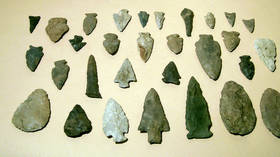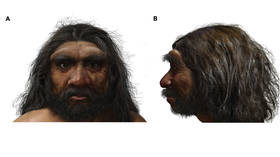Research challenges date of modern humans’ arrival in Europe

Stone artifacts and a child’s tooth found in a cave in southern France pre-date the earliest known evidence of modern humans’ arrival in Europe by thousands of years, challenging the existing scientific views on their co-habitation with Neanderthals, a team of archeologists claim in a new study published in ‘Science Advances’ on Wednesday.
Modern humans were known to have arrived in Europe from Africa around 40,000 years ago, shortly before the Neanderthals that had been living there went extinct. These facts prompted some scientists to believe that modern humans quickly overwhelmed the other species and virtually wiped them out, leading to the Neanderthals’ extinction.
Now, a team led by Professor Ludovic Slimak, a cultural anthropologist at the French National Center for Scientific Research (CNRS) – one of the largest fundamental science agencies in Europe – has challenged this point of view.
His team, working in a cave known as Grotte Mandrin in the Rhone Valley in southern France, discovered a tooth belonging to a child aged between 2 and 6, which dates back to around 54,000 years ago, and which they say cannot belong to a Neanderthal.
The archeologists also found thousands of stone tools, some of which closely resemble arrowheads belonging to modern humans, which had previously been found in Lebanon. These artifacts also date back to a period between 51,700 and 56,800 years ago, according to the team.
Now the team believes that modern humans occupied Grotte Mandrin for a brief period of time around 12,000 years before scientists believe the modern human species first arrived in Europe. Slimak estimates that the residency lasted for around 40 years, according to a piece published by the team in the outlet ‘Conversation’.
After one or two generations, “they disappeared just as quickly and mysteriously as they had appeared,” the team said. Neanderthals occupying the cave for thousands of years before the sudden arrival of the modern humans then “regularly reoccupied Mandrin over the following 12,000 years,” the team added.
“We are now able to demonstrate that Homo sapiens arrived 12,000 years before we expected, and this population was then replaced after that by other Neanderthal populations. And this literally rewrites all our books of history,” Slimak said, adding that the populations of modern humans and Neanderthals “must have in some way met each other.”
Now the team wants to find out if the modern humans had relations with the Neanderthals and if they exchanged information in a peaceful way. Previous studies have shown that modern humans have a small amount of Neanderthal DNA, indicating the two species did interbreed.
The news was met with interest by some scientists. Professor Chris Stringer of the Natural History Museum in London agreed that the discovery does challenge existing scientific views.
“It wasn’t an overnight takeover by modern humans,” he told BBC News. “Sometimes Neanderthals had the advantage, sometimes modern humans had the advantage, so it was more finely balanced.”
Others, like William Banks, a Paleolithic archaeologist at the CRNS and the University of Bordeaux, remains skeptical. “It is not a stretch to think that a single Neanderthal tooth could have dental characteristics that resemble moderns,” he said, as cited by Nature, suggesting that the artifacts found in the cave might not be those of Homo sapiens.













